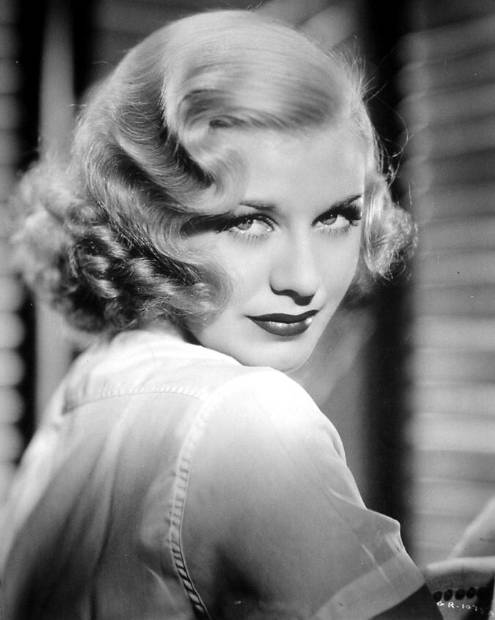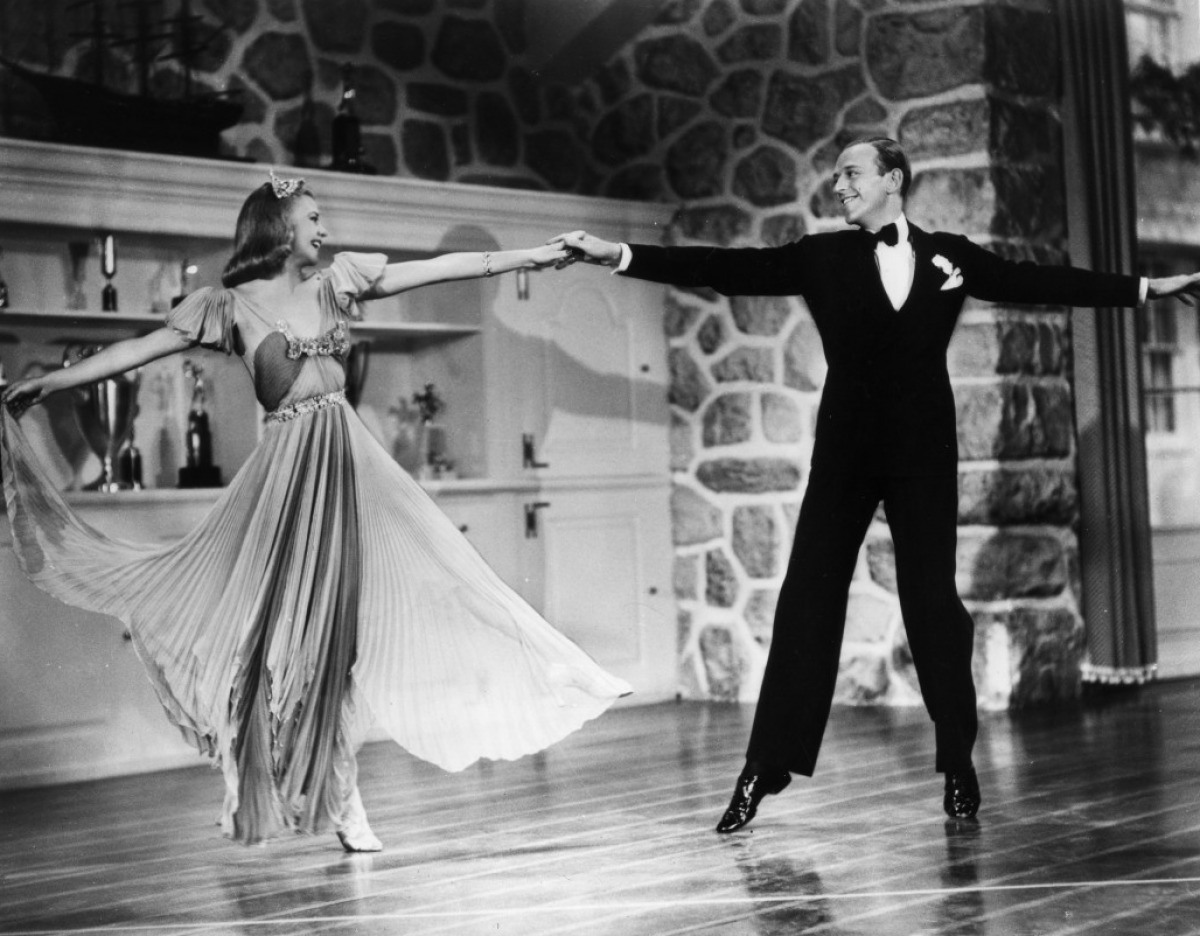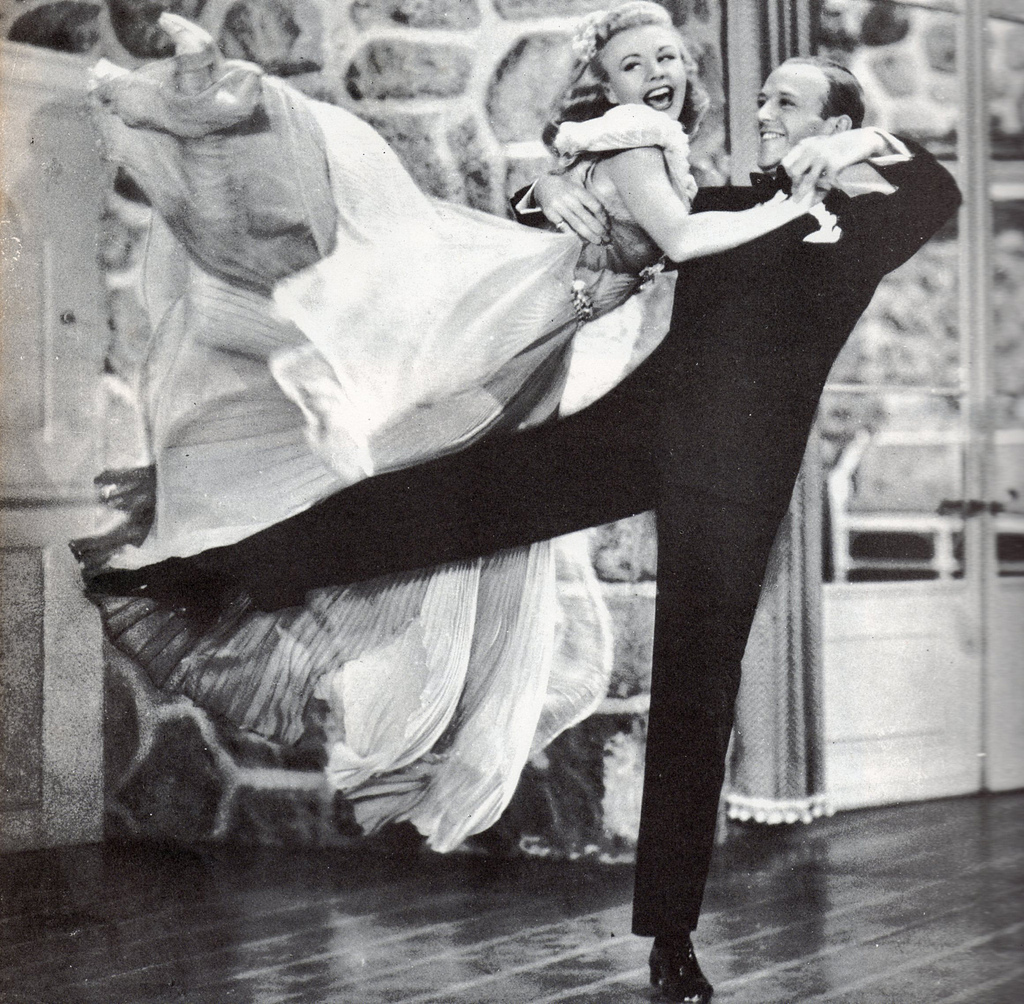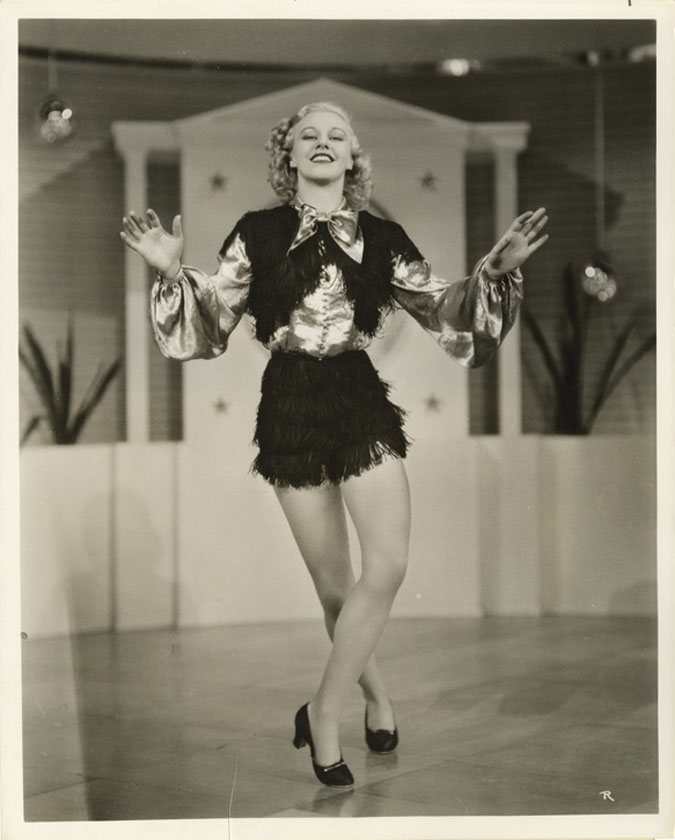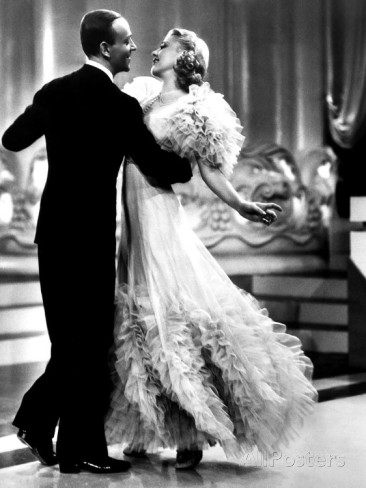Ginger Rogers
See also: Categories: Instructors, Adjudicators, Dancers
Overview
Born in Independence, Missouri, and raised in Kansas City, Rogers and her family moved to Fort Worth, Texas, when she was nine. After winning a dance contest that launched a successful vaudeville career, she gained recognition as a Broadway actress for her debut stage role in Girl Crazy. This success led to a contract with Paramount Pictures, which ended after five films.
Rogers's first successful film role was a supporting role in 42nd Street (1933). Throughout the 1930s, Rogers made ten films with Fred Astaire, among which were some of her biggest successes, such as Swing Time (1936) and Top Hat (1935). After two commercial failures with Astaire, Rogers began to branch out into dramatic films and comedies. Her acting was well received by critics and audiences, and she became one of the biggest box-office draws of the 1940s. Her performance in Kitty Foyle (1940) won her the Academy Award for Best Actress.
Though she remained successful throughout the 1940s and at one point was Hollywood's highest paid actress, by the end of the decade her popularity had peaked. She reunited with Astaire in 1949 in the commercially successful The Barkleys of Broadway. After an unsuccessful period through the 1950s, Rogers made a successful return to Broadway in 1965, playing the lead role in Hello, Dolly! More lead roles on Broadway followed, along with her stage directorial debut in 1985 on an off-Broadway production of Babes in Arms. Rogers also made television acting appearances until 1987. In 1992, Rogers was recognized at the Kennedy Center Honors. She died of a heart attack in 1995, at the age of 83.
Rogers is associated with the phrase "backwards and in high heels", the title of her memoir, attributed to Bob Thaves' Frank and Ernest cartoon with the caption "Sure he [Astaire] was great, but don't forget that Ginger Rogers did everything he did... backwards and in high heels.
A Republican and a devout Christian Scientist, Rogers was married five times, with all of her marriages ending in divorce; she was childless. During her long career, Rogers made 73 films, and her musical films with Fred Astaire are credited with revolutionizing their genre. Rogers was successful during the Golden Age of Hollywood, and is often considered an American icon. She ranks #14 on the AFI's 100 Years...100 Stars list of female stars of classic American cinema.
Early life
She was of Scottish, Welsh, and English ancestry. Her mother did not want her born in a hospital, having lost a previous child there. Her parents had separated before she was born, but her grandparents, Walter and Saphrona (née Ball) Owens, lived nearby in Kansas City. After unsuccessfully trying to become a family again, McMath kidnapped his daughter twice. Rogers said that she never saw her natural born father again. Her mother divorced her father soon thereafter.In 1915, Rogers moved in with her grandparents while her mother made a trip to Hollywood in an effort to get an essay she had written made into a film. Lela succeeded and continued to write scripts for Fox Studios. Rogers was to remain close to her grandfather (much later, when she was a star in 1939, she bought him a home at 5115 Greenbush Avenue in Sherman Oaks, California, so he could be close to her while she was filming at the studios).
One of Rogers' young cousins, Helen, had a hard time pronouncing "Virginia", shortening it to "Badinda"; the nickname soon became "Ginga".
When "Ginga" was nine years old, her mother remarried, to John Logan Rogers. Ginger took the surname Rogers, although she was never legally adopted. They lived in Fort Worth, Texas. Her mother became a theater critic for a local newspaper, the Fort Worth Record. She attended, but did not graduate from, Fort Worth's Central High School (later renamed R.L. Paschal High School).
As a teenager, Rogers thought of becoming a school teacher, but with her mother's interest in Hollywood and the theater, her early exposure to the theater increased. Waiting for her mother in the wings of the Majestic Theatre, she began to sing and dance along with the performers on stage
Career
Vaudeville and Broadway
Rogers' entertainment career was born one night when the traveling vaudeville act of Eddie Foy came to Fort Worth and needed a quick stand-in. She then entered and won a Charleston dance contest which allowed her to tour for six months, at one point in 1926 performing at an 18-month-old theater called The Craterian in Medford, Oregon. This theater honored her many years later by changing its name to the Craterian Ginger Rogers Theater.At 17, Rogers married Jack Culpepper, a singer/dancer/comedian/recording artist of the day who worked under the name Jack Pepper (according to Ginger's autobiography, she knew Culpepper when she was a child, as her cousin's boyfriend). They formed a short-lived vaudeville double act known as "Ginger and Pepper". The marriage was over within months, and she went back to touring with her mother. When the tour got to New York City, she stayed, getting radio singing jobs and then her Broadway theater debut in a musical called Top Speed, which opened on Christmas Day, 1929.
Within two weeks of opening in Top Speed, Rogers was chosen to star on Broadway in Girl Crazy by George Gershwin and Ira Gershwin. Fred Astaire was hired to help the dancers with their choreography. Her appearance in Girl Crazy made her an overnight star at the age of 19.
1933–1939: Astaire and Rogers
Rogers was known for her partnership with Fred Astaire. Together, from 1933 to 1939, they made 10 musical films at RKO: Flying Down to Rio (1933), The Gay Divorcee (1934), Roberta (1935), Top Hat (1935), Follow the Fleet (1936), Swing Time (1936), Shall We Dance (1937), Carefree (1938), and The Story of Vernon and Irene Castle (1939). The Barkleys of Broadway (1949) was produced later at MGM). They revolutionized the Hollywood musical, introducing dance routines of unprecedented elegance and virtuosity, set to songs specially composed for them by the greatest popular song composers of the day.Of the 33 partnered dances Rogers performed with Astaire, Croce, and Mueller have highlighted the infectious spontaneity of her performances in the comic numbers "I'll Be Hard to Handle" from Roberta, "I'm Putting All My Eggs in One Basket" from Follow the Fleet, and "Pick Yourself Up" from Swing Time. They also point to the use Astaire made of her remarkably flexible back in classic romantic dances such as "Smoke Gets in Your Eyes" from Roberta, "Cheek to Cheek" from Top Hat, and "Let's Face the Music and Dance" from Follow the Fleet.
Although the dance routines were choreographed by Astaire and his collaborator Hermes Pan, both have acknowledged Rogers's input and have also testified to her consummate professionalism, even during periods of intense strain, as she tried to juggle her many other contractual film commitments with the punishing rehearsal schedules of Astaire, who made at most two films in any one year. In 1986, shortly before his death, Astaire remarked, "All the girls I ever danced with thought they couldn't do it, but of course they could. So they always cried. All except Ginger. No no, Ginger never cried".
John Mueller summed up Rogers's abilities as: "Rogers was outstanding among Astaire's partners, not because she was superior to others as a dancer, but, because, as a skilled, intuitive actress, she was cagey enough to realize that acting did not stop when dancing began ... the reason so many women have fantasized about dancing with Fred Astaire is that Ginger Rogers conveyed the impression that dancing with him is the most thrilling experience imaginable".
Late career
Rogers's film career entered a period of gradual decline in the 1950s, as parts for older actresses became more difficult to obtain, but she still scored with some solid movies. She starred in Storm Warning (1950) with Ronald Reagan and Doris Day, the noir, anti-Ku Klux Klan film by Warner Brothers, and in Monkey Business (1952) with Cary Grant and Marilyn Monroe, directed by Howard Hawks. In the same year, she also starred in We're Not Married!, also featuring Marilyn Monroe, and in Dreamboat. She played the female lead in Tight Spot (1955), a mystery thriller, with Edward G. Robinson. After a series of unremarkable films, she scored a great popular success on Broadway in 1965, playing Dolly Levi in the long-running Hello, Dolly!.From the 1950s onwards, Rogers made occasional appearances on television, even substituting for a vacationing Hal March on The $64,000 Question. In the later years of her career, she made guest appearances in three different series by Aaron Spelling: The Love Boat (1979), Glitter (1984), and Hotel (1987), which was her final screen appearance as an actress. In 1985, Rogers fulfilled a long-standing wish to direct when she directed the musical Babes in Arms off-Broadway in Tarrytown, New York, at 74 years old. Interviews can be found in the New York Times under "Ginger Rogers directs". It was produced by Michael Lipton and Robert Kennedy of Kennedy Lipton Productions. The production starred Broadway talents Donna Theodore, Carleton Carpenter, James Brennan, Randy Skinner, Karen Ziemba, Dwight Edwards, and Kim Morgan. It is also noted in her autobiography Ginger, My Story.
Death
Rogers spent winters in Rancho Mirage and summers in Medford. She continued making public appearances (chiefly at award shows) until suffering a stroke that left her partially paralyzed and dependent on a wheelchair. Despite her stroke, as a practitioner of Christian Science, she never saw a doctor or went to a hospital. She died at her Rancho Mirage home on April 25, 1995, at the age of 83. An autopsy concluded that the cause of death was a heart attack.[14] She was cremated and her ashes interred in the Oakwood Memorial Park Cemetery in Chatsworth, California, with her mother's remains.
